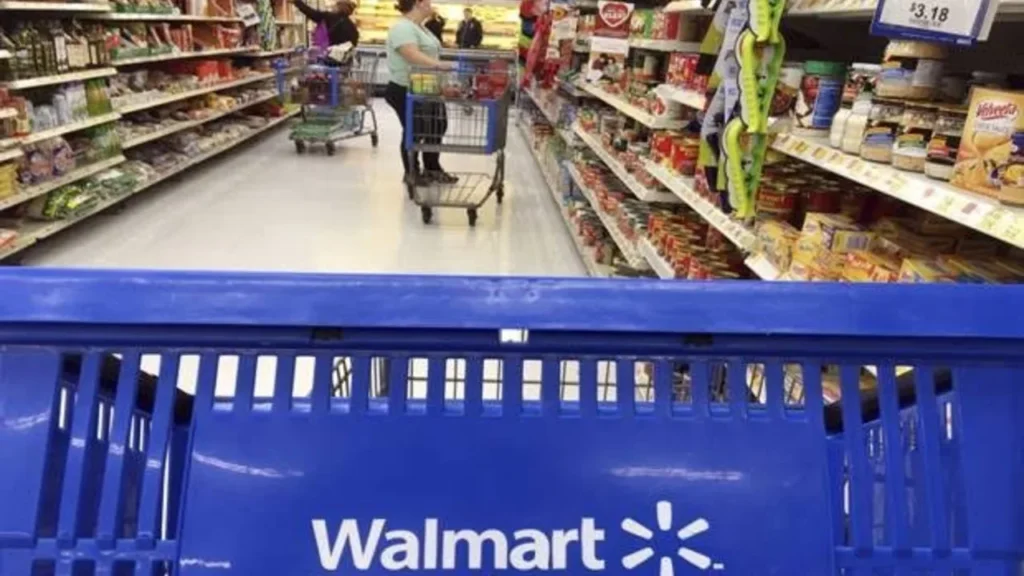The global retail powerhouse Walmart has officially entered the African continent with the opening of its first branded store in South Africa – a landmark step signalling both opportunity and challenge in one of Africa’s most dynamic retail landscapes.
A Strategic Entry Point: Why South Africa?
Selecting South Africa as its continental entry was far from arbitrary. The country possesses one of the most developed retail infrastructures in Africa, a sizeable urban middle class, and a consumer base increasingly hungry for global-brand products and value-pricing. This environment provides fertile ground for a retail giant accustomed to scale, supply-chain efficiencies and global sourcing to bring its signature model of “everyday low prices” to a new region.
By positioning a store in the Roodepoort area, just west of Johannesburg, Walmart is placing itself in a vibrant urban zone that reflects both modern retail demands and historic shopping patterns in South Africa. Launching here means access to significant volume potential and a testing ground for the broader African rollout the company may have in mind.
The Grand Opening Experience
On launch day, shoppers queued in eager anticipation. It was clear that many were drawn not only by the promise of bargains but by the unique product mix and brand cachet that Walmart intends to bring to South Africa. Items that had previously been either hard to find or expensive locally suddenly sat on the shelves: international toys, designer appliances and imported soft drinks. These offerings served to underscore the novelty of the brand’s arrival in the market.
One shopper commented he was there for a specific toy not widely available locally, while another eyed tech accessories like WiFi extenders, hopeful that Walmart’s value-pricing would deliver better deals. The excitement on the queue reflected the thirst among South African consumers for new retail options and global styles at competitive pricing.
Assortment & Value-Driven Offering
The new store’s assortment spans multiple departments: fresh and frozen groceries, general merchandise, home goods, toys, electronics and international foods and beverages business. The idea is straightforward: replicate Walmart’s one-stop shopping convenience and price leadership model in a new market.
The “everyday low prices” mantra is central. Instead of relying purely on promotional campaigns or short-term specials, the brand aims to reset local pricing expectations by delivering consistently lower total basket cost. For consumers who have grown accustomed to frequent promotions and deal-hunting, this could mark a shift toward more predictable value.
Digital & Delivery Innovation in a Local Context
Mattering as much as the physical store is the digital and delivery component. The retailer has introduced an express delivery service boasting 60-minute delivery within a defined radius of the store. This places it in direct competition with established local on-demand players that have already built momentum in South Africa’s urban centres.
This hybrid model—physical store anchored, but supported by rapid fulfilment and app-based ordering—reflects a broader global retail trend that mixes bricks-and-mortar with digital convenience. For South African consumers accustomed to fast-moving local e-commerce services, this is likely to be a key battleground. The company’s challenge will be to integrate local logistics, manage delivery cost and still uphold value pricing.
Economic and Community Engagement Impact
Beyond its retail ambitions, the company has taken steps to root itself in the local economy. The store has created new jobs and partnered with a number of small- and medium-sized enterprises (SMEs) in the region, signalling that this entry is not just about import-led retail expansion but about local supply-chain involvement.
This makes sense: success in South Africa (and beyond) will depend on the ability to blend global sourcing with local relevance—products, pricing and presentation must reflect South African consumer preferences and supply environments. By creating career opportunities and working with local suppliers, Walmart is reinforcing broader social and economic contributions.
Competitive Landscape: Facing Established Players
The South African retail market is no easy terrain. Domestic chains have long held strong positions, deep understanding of consumer behaviour, pricing pressures and local supply-chain dynamics. Walmart’s arrival will draw immediate scrutiny from these incumbents, who will likely adjust their strategies in response.
Moreover, foreign retailers entering Africa often face additional hurdles: currency volatility, import duties, logistics infrastructure limitations and regulatory complexity. While South Africa is one of the more mature markets, these risks still exist and must be managed. The ability of Walmart to adapt its global model—and localise effectively—will be crucial for sustained success.
Why This Entry Matters for Africa’s Retail Evolution
The significance of Walmart’s launch extends beyond a single store. For global retail watchers, this marks a visible commitment to the African market under the company’s own branding, not merely via a local acquisition or partnership. It suggests that Africa remains a growth frontier for major retail players.
If Walmart’s South African model proves successful, it could spark further expansion into other African markets. Such a move would intensify competition, accelerate digital and logistics innovation and sharpen value propositions for consumers, raising the standard and pace of retail evolution in the region.
Key Challenges and Watch-Points for the Future
Several important questions now stand out:
- **Localisation of product mix**: Will the store continue to offer a balance of global brands and locally relevant products suited to South African tastes and purchasing power?
- **Pricing sustainability**: Can the promise of everyday low prices hold when import costs, currency fluctuations and logistics pressures bite?
- **Scale and expansion**: Will this launch remain a flagship experiment, or will it roll out additional stores across the continent at pace?
- **Digital fulfilment efficiency**: Delivering on the 60-minute promise in a new market is operationally demanding—especially when maintaining profitability.
Addressing these effectively will determine whether the entry remains a headline moment or becomes a long-term success story in Africa’s retail narrative.
What This Means for South African Consumers
For consumers, the arrival of Walmart represents both excitement and choice. Access to international brands, new price points and delivery options will enhance competition in a market that has steadily evolved but still carries legacy pricing and supply-chain structures. For consumers in Johannesburg and beyond, this means potentially better value, fresh assortment and faster delivery.
For local suppliers, it also opens fresh opportunity. Being part of Walmart’s local supply network means exposure, distribution scale and the chance to service both domestic and global channels. That in turn can feed economic growth, job creation and supplier development—if managed well.
Looking Ahead: The Path Forward
Now that the first store is open, attention will turn to execution, expansion and adaptation. The launch timing is strategic: ahead of gift-giving seasons, heightened shopping activity and browsing demand. If operationally sound, the retailer may use this as a model and pivot quickly to additional sites.
Beyond South Africa, the broader African retail landscape remains complex but promising. Markets vary widely in their economic conditions, infrastructure readiness and consumer behaviours. Success in one market does not guarantee scale elsewhere—but with a well-executed pilot, Walmart is well positioned to make further moves.
Conclusion
The opening of this first store in South Africa marks a bold new chapter in Walmart’s global journey. With the brand’s signature value proposition, a strengthened digital and delivery platform, and local economic engagement, the company is setting the stage for what could become a meaningful presence in Africa. But in a market characterised by savvy competitors and operational complexity, success will depend on localisation, delivery, pricing discipline and consumer resonance.
For South African shoppers, the arrival of Walmart brings new choice, new pricing dynamics and a reminder that global retail is watching—and competing—for Africa’s growing consumer base. For the broader continent, it signals that international retail expansion is real, and that Africa’s next wave of retail transformation is underway.



